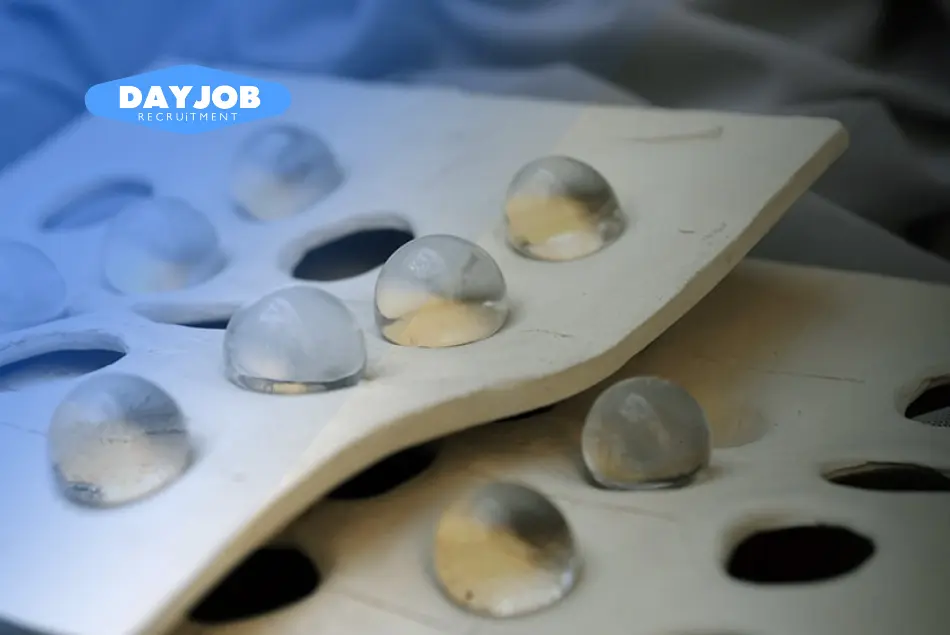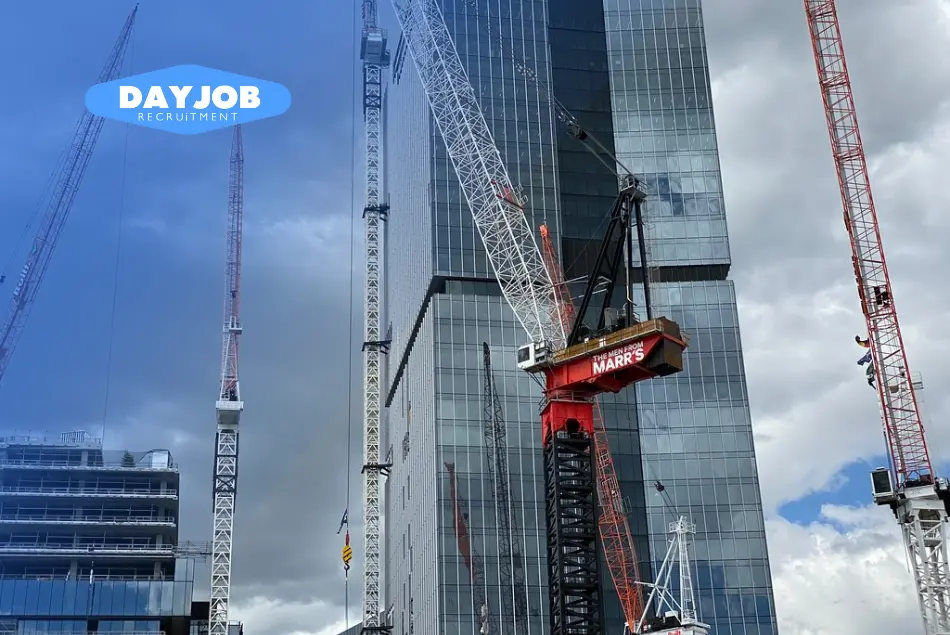Metal fabrication is an art as much as it is a science. It is the unsung hero of the industrial world, a field that shapes the backbone of our infrastructure and technology. Metal fabricators are skilled artisans who transform raw metal into the products and structures that power our lives—from the cars we drive to the buildings we inhabit. This career is not just about bending and cutting metal; it’s about precision, creativity, and strength.
In this guide, we delve into the world of metal fabricators, exploring the pivotal role they play in various sectors and what it takes to forge a successful career in this vital industry.
What is Metal Fabrication?

Metal Fabrication Job Description
At its core, metal fabrication is building structures by cutting, bending, and assembling. Metal fabricators are the craftsmen who read and interpret blueprints and then weld and construct the metal accordingly. They are responsible for creating various products, ranging from simple components to complex machinery.
Specialisations within the Field
The field of metal fabrication is broad, with several specialisations that fabricators can pursue, including:
- Boilermaker: Specializes in constructing and repairing boilers and other high-pressure vessels.
- Welder: Joins metal parts together using welding equipment.
- Metal Fabricator: The terms “welder” and “metal fabricator” are sometimes used interchangeably, but they refer to different roles within the metalworking field. Fabrication involves the entire process of making metal products, while welding is just one step in that process. Essentially, fabrication can involve welding, but welding is specifically about joining metal together.
- Fitter and Turner: Fits and assembles metal parts and machinery.
- Pipefitter: Installs and repairs piping systems made from metal.
- Toolmaker: Creates precision tools, often using CNC machines, that are used to manufacture other metal components and products.
- Numerous CNC Machine Operators:
- CNC Mills: For cutting, drilling, and shaping metal.
- CNC Lathes or Turning Centers: for producing complex, precision parts such as cylindrical shapes, threads, flanges, and bushings.
- CNC Plasma Cutters: For cutting metal using a plasma torch.
- CNC Laser Cutters: For high-precision laser cutting operations.
- CNC Water Jet Cutters: For cutting metal using a high-pressure water stream.
- CNC Grinders: For precision grinding to finish metal parts.
- CNC Routers: For cutting softer metals and complex shapes.
- CNC Electrical Discharge Machines (EDM): For shaping metal using electrical discharges.
- CNC Punch Press: For punching holes and shapes in metal.
- CNC Press Brake: For precision bending and folding of metal sheets.
Are you a job seeker looking for your next big opportunity? Click below to see how we can assist you in finding the perfect role.
Qualifications and Skills Required in Australia
Educational Pathways
To become a metal fabricator in Australia, one typically pursues a Certificate III in Engineering – Fabrication Trade through TAFE or a registered training organisation. Apprenticeships are a common pathway, combining on-the-job training with classroom learning.
Key Skills
The critical skills for metal fabricators in Australia include:
- Technical Understanding: A grasp of technical drawings and specifications is essential.
- Problem-Solving: The ability to identify and resolve issues during the fabrication process.
- Attention to Detail: Precision is vital in ensuring the quality and safety of the final product.
Abilities and Mental Aptitudes
- Spatial Awareness: Understanding how fabricated parts come together in three-dimensional space.
- Manual Dexterity: The ability to manipulate tools and materials with precision.
Discover your ideal job match!
Working Conditions in Australia
Image source from: Labour Marketing Insights
Typical Environments
Australian metal fabricators can work in:
- Manufacturing Plants: Producing parts for various industries.
- Construction Sites: Fabricating components for buildings and infrastructure.
- Mining and Resources Sector: Creating and maintaining equipment used in resource extraction.
- Maritime Industry: Crafting and repairing metal parts for ships, submarines, and offshore platforms.
- Artisan Workshops: Creating artistic and custom metal designs for architectural or decorative purposes.
Physical Demands and Safety Considerations
The role of a sheet metal fabricator in Australia is physically demanding and requires adherence to strict safety standards. PPE is mandatory, and workplace health and safety regulations are rigorously enforced to protect workers from the inherent risks of the job.
Tools and Technologies
Common Tools Used
In the Australian metal fabrication industry, tradespeople are adept at using various tools essential to their craft. These include hand and machine tools:
- Hand Tools: Hammers, chisels, and files are the primary instruments for shaping metal.
- Flame Cutting Torches: Oxy-acetylene torches are commonly used for cutting and joining metal pieces.
- Machining Tools: Drills, lathes, milling, and other metal cutting machines refine and shape metal components.
The Role of Technology
Technology plays a significant role in modern metal fabrication in Australia:
- Computer-Aided Design (CAD) Software: CAD is extensively used for planning and designing metal parts and structures.
- Computer Numerical Control (CNC) Machines: These machines are programmed to cut and shape metal, increasing efficiency and accuracy precisely.
- 3D Printing/Additive Manufacturing: Newer to the field, 3D printing technology is used to create complex metal components by adding material layer by layer, which allows for greater design flexibility and reduces waste.
- Robotics and Automation: To combat the rising labour costs and keep production in Australia, robots are increasingly used in metal fabrication for tasks like welding, painting, and assembly, leading to improved safety, enhancing safety, and efficiency, and reducing operational costs. Read more here.
- Industry 4.0: Industry 4.0 represents the fourth industrial revolution, characterized by integrating digital technologies such as IoT, AI, and real-time data analytics into manufacturing processes, leading to smarter, interconnected production systems and improved operational efficiency.
Path to Becoming a Metal Fabricator in Australia
Apprenticeship and Training Options
The journey to becoming a metal fabricator in Australia often begins with an apprenticeship, which provides a blend of technical training and practical experience. Internships can be found through:
- Technical and Further Education (TAFE) Institutes: Offering structured training that leads to a nationally recognized qualification.
- Private Training Providers: Specialized courses catering to specific metal fabrication areas.
School-Based Apprenticeships and Vocational Education
High school students in Australia can also start their path early through:
- Vocational Education and Training (VET) in Schools: Programs that allow students to gain industry skills while completing their secondary education.
- School-Based Apprenticeships: These enable students to begin an apprenticeship part-time while still at school.
Is your company ready to find the right talent?
Employment Outlook
Employment Statistics and Projections
The demand for metal fabricators in Australia is influenced by various factors, including:
- Economic Cycles: The economy’s health affects construction and manufacturing, impacting demand for metal fabricators.
- Infrastructure Projects: Government investment in infrastructure can surge demand for skilled fabricators.
Industries with a High Demand for Metal Fabricators
Metal fabricators in Australia find opportunities in several robust sectors:
- Construction: Both commercial and residential buildings require metal fabricators for structural components.
- Mining: The mining industry requires specialized fabricators for equipment maintenance and repair.
- Transportation: Fabrication of components for automotive, aerospace, and shipbuilding industries.
Average Salary for Metal Fabricators in Australia
In Australia, the starting average hourly wage for Metal Fabricators in 2023 ranges between $25 to $30. The overall salary range, including potential bonuses, spans from AU$47,000 to AU$100,000 and more annually.
The pay for metal fabricators can vary depending on experience and bonuses. The average hourly pay falls within the above range for those starting out in the field. However, as you gain more experience, your salary can increase significantly. In fact, highly experienced metal fabricators working in FIFO jobs can earn up to $70 per hour.
Challenges and Rewards
Physical and Mental Challenges
Metal fabrication can be physically strenuous and mentally taxing, with fabricators often working in challenging conditions. They must maintain high concentration levels and adhere to safety protocols to prevent accidents.
The Satisfaction of Creating and Repairing Critical Structures
Despite the challenges, there is a significant sense of accomplishment in the trade. Metal fabricators take pride in their work, knowing they contribute to building and maintaining the infrastructure that keeps Australia moving. The tangible results of their labour—be it a part of a skyscraper, a piece of vital machinery, or a component of a transport vehicle—offer a rewarding testament to their skill and dedication.
Career Advancement and Opportunities For Sheet Metal Fabrication
Potential for Growth and Specialization
In Australia, the metal fabrication industry offers a wealth of opportunities for career advancement. Skilled fabricators can move into supervisory roles, manage projects, or start fabrication businesses. Specialization is another avenue for growth, with options including:
- Welding Inspection and Quality Control: Ensuring the safety and integrity of metal structures.
- CNC Programming: Specializing in the programming of CNC machines for increased precision in metalworking.
- Robotics and Automation: Working with advanced machinery that is transforming the industry.
Continuing Education and Certifications
Continuing education is critical to advancement in the metal fabrication industry. Australian fabricators can enhance their careers through:
- Professional Development Courses: Offered by TAFE institutes and industry associations.
- Certifications: Such as welding certifications, which can increase a fabricator’s qualifications and potential earnings.
- Advanced Diplomas: In engineering and fabrication, these can lead to higher-level positions within the industry.
Transforming the Future: 2024 Trends in Australia’s Custom Metal Fabrication Industry
The dynamics of custom metal fabrication companies in Australia are being shaped by several cutting-edge trends and innovations that are reshaping the industry landscape in 2024 and beyond. These trends are crucial for companies to stay competitive and address the evolving demands of the market. Here’s an overview of the latest trends:
- Digital Transformation and Automation: The integration of digital technologies such as computer-aided design (CAD), computer-aided manufacturing (CAM), and the adoption of automation and robotics is revolutionizing metal fabrication. These advancements are enhancing precision, efficiency, and safety while reducing production times and the risk of workplace injuries.
- Sustainability and Eco-Friendly Practices: There’s a growing emphasis on sustainable manufacturing practices, including the use of recycled materials and energy-efficient processes. Companies are striving to reduce their carbon footprint and embrace green manufacturing to meet both regulatory requirements and consumer expectations for environmental responsibility.
- Advancements in Materials: The use of advanced materials, such as high-strength alloys and lightweight metals like aluminum and titanium, is on the rise. These materials offer improved properties like corrosion resistance and strength-to-weight ratios, opening up new possibilities for product design and application.
- Customization and On-Demand Manufacturing: As consumer preferences evolve, there’s an increasing demand for personalized and customized products. Metal fabrication companies are leveraging digital tools to offer customized solutions and engaging in small-batch production to meet these demands.
- Emerging Technologies: Technologies such as 3D printing, additive manufacturing, digital twins, and augmented reality (AR) are making significant inroads into the industry. These technologies enable the creation of complex and customized components with high precision, optimize manufacturing processes, and provide immersive training experiences (Woodward Fab).
- Workforce Skills and Training: Despite the shift towards automation, the importance of a skilled workforce remains paramount. There is a growing need for workers skilled in digital fabrication technologies, robotics, and sustainable manufacturing practices. Training and education programs are adapting to equip the future workforce with these essential skills.
- Supply Chain Digitization and Traceability: Digital technologies are being applied to enhance supply chain transparency and efficiency. Traceability technologies such as blockchain are helping to ensure product quality, verify the source of materials, and comply with industry regulations.
Conclusion
Metal fabricators are integral to Australia’s industrial landscape. They create the components essential to the nation’s infrastructure, manufacturing, and construction sectors. Without these skilled professionals, the development and maintenance of critical structures and machinery would not be possible.
For those drawn to a career that combines technical skills with hands-on work, metal fabrication offers a fulfilling path. It is a profession that not only builds structures but also careers and futures. With the proper training, a commitment to safety, and a willingness to embrace technological advancements, aspiring metal fabricators in Australia can look forward to a robust and rewarding career.
Embark on a journey of growth and opportunity in Australia’s metal fabrication industry with Dayjob Recruitment. Whether you’re a skilled tradesperson seeking your next challenge or an employer searching for top-tier talent, Dayjob Recruitment is your innovation partner. We specialize in connecting the finest in the manufacturing and construction industries with leading companies nationwide.
Is this the role you’ve been waiting for
FAQs
What types of metal stock are commonly used by metal fabricators in Australia?
Metal fabricators in Australia work with various metal stocks, including sheet metal, plate metal, and sections such as tubes and bars. The type of stock used depends on the project requirements and the specific industry, such as construction or automotive.
Can you describe the various welding techniques metal fabricators need to be proficient in?
Proficiency in multiple welding techniques is crucial for metal fabricators. Standard methods include MIG (Metal Inert Gas), TIG (Tungsten Inert Gas), stick welding, and oxy-acetylene welding. Each technique has its applications, with MIG suitable for various metals and TIG for precision work.
What is the difference between hand and power tools in metal fabrication, and why are both important?
Hand tools, like hammers, chisels, and files, are essential for detailed work and finishing touches, while power tools, such as angle grinders and drill presses, are used for tasks that require more power or speed. Both are important for the versatility and efficiency they bring to metal fabrication tasks.
How do metal fabricators prepare metal stock for a project?
Preparing metal stock involves measuring and cutting the metal to the required size, including sawing, shearing, or laser cutting. The stock is then shaped using various techniques, such as bending, punching, or welding, depending on the project specifications.
What raw materials should a metal fabricator be familiar with?
Metal fabricators should be familiar with various raw materials, including different grades and types of steel, aluminium, copper, and sometimes specialty alloys. Knowledge of material properties is essential for selecting the right style for each job.
How are metal sections used in the construction industry?
In the construction industry, metal sections are used as structural components. They provide the framework for buildings and infrastructure, such as beams, girders, and columns. These sections are chosen for their strength, durability, and ability to withstand various loads.
What is involved in marking out metal sections for fabrication?
Marked-out metal sections involve a precise process outlining the exact measurements and cuts on metal stock before fabrication. This step is crucial for accuracy and consists of tools like scribes, rulers, and punches to ensure the metal is cut and shaped according to the design specifications.
Why is it essential for metal fabricators to have a thorough understanding of the properties of various raw materials?
Understanding the properties of various raw materials, such as their strength, malleability, and resistance to corrosion, allows metal fabricators to choose the appropriate material for the job, ensuring the durability and functionality of the final product.
What safety measures should be taken when working with metal stock and heavy machinery?
Safety measures include wearing appropriate personal protective equipment (PPE), such as gloves, safety glasses, and ear protection, and ensuring that all machinery is used according to the manufacturer’s instructions. Regular maintenance of tools and adherence to safety protocols are also vital to prevent accidents.
How does the ability to prepare and mark out metal sections contribute to a fabricator’s skill set in the construction industry?
The ability to prepare and mark out metal sections accurately is fundamental in the construction industry, as it ensures that the metal components fit together correctly and the structure is built to specifications. This skill impacts the integrity and safety of buildings and infrastructure, making it a critical aspect of a fabricator’s expertise.
Do you know the perfect candidate for the job? Refer and start earning today!








